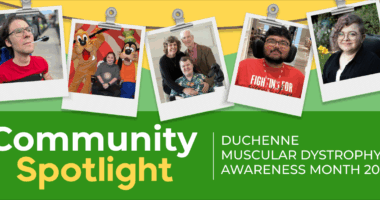A program for youth leaders leaves me optimistic for the future
Duchenne taught me the power of empathy in leadership

A couple weeks ago, I had the privilege of participating in a unique event designed for higher education students here in Singapore. It’s offered by Youth Corps Singapore to foster a sense of service among the next generation of leaders.
As one of three ambassadors representing the Muscular Dystrophy Association (Singapore), I shared my experiences as a Duchenne muscular dystrophy (DMD) advocate to foster understanding and empathy in these young minds, an experience that was deeply rewarding.
The afternoon kicked off warmly with a relaxed icebreaker called “Speed Friending.” Each participant drew a random question from a box, opening up opportunities for heartfelt conversations. It created an atmosphere of ease and connection, a foundation for the day’s activities.
Simulating Duchenne through interactive challenges
After the icebreaker, participants engaged in interactive sessions designed to simulate some of the everyday challenges that people with DMD regularly face. The first of these was a muscle fatigue simulation. Participants used their nondominant hands to perform tasks like making a list of emergency evacuation items and buttoning a shirt. These tasks, which may seem simple to many, are significantly challenging for individuals with DMD, due to muscle weakness and fatigue.
Witnessing people’s initial frustration gave me insight into the impact of experiential learning. It wasn’t only about how the simplest of mundane tasks suddenly became difficult for them, but also the realization that people living with Duchenne require resilience every day.
Next, the students had to plan a two-day accessible itinerary in Singapore for an ambassador with DMD. This activity encouraged the participants to think critically about accessibility and inclusion. It also highlighted the students’ desire to make the world a more inclusive place. Their earnest discussions about accessible attractions, such as Gardens by the Bay, were a poignant reminder of the progress we’re making in understanding diverse access needs.
In the final challenge, teams unleashed their creativity while brainstorming wheelchair enhancements. Their ideas ranged from attachable umbrellas to innovative storage solutions. Their enthusiasm and creative thinking brought a smile to my face, filling me with hope for the future. It’s a clear sign of an increasing will by Singaporean society to innovate and enhance the lives of DMD patients.
Learning empathy through personal narratives
For the next segment, each group developed case studies around a team member living with muscular dystrophy. These presentations were both engaging and fun. The students shared detailed narratives of their peers’ daily routines, struggles, strengths, and support systems.
These personal narratives, more than statistics or medical facts, proved to be a powerful tool in fostering empathy and understanding. I could feel the room growing more reflective and compassionate as the discussions progressed. Each presentation reinforced my conviction that experience begins with sharing personal stories.
The day concluded with photos and heartfelt goodbyes. As I watched these young leaders depart, I felt a renewed hope that was as bright as their enthusiasm. Initiatives like these remind us that nurturing empathy is just as important as imparting knowledge.
Through understanding and connection, Duchenne advocates can empower future leaders with their stories of overcoming adversity. But we can also foster allies in advocacy. It’s a powerful reminder of the impact we can have when we prioritize empathy in our local communities.
Living with Duchenne has taught me resilience, creativity, and adaptability. But the most important lesson I’ve learned is the power of empathy in leadership. Seeing young people actively step into someone else’s shoes, even for a one-off session, fills me with hope for a more inclusive future, one where those of us living with muscular dystrophy are seen, heard, and truly understood.
Note: Muscular Dystrophy News Today is strictly a news and information website about the disease. It does not provide medical advice, diagnosis, or treatment. This content is not intended to be a substitute for professional medical advice, diagnosis, or treatment. Always seek the advice of your physician or another qualified health provider with any questions you may have regarding a medical condition. Never disregard professional medical advice or delay in seeking it because of something you have read on this website. The opinions expressed in this column are not those of Muscular Dystrophy News Today or its parent company, Bionews, and are intended to spark discussion about issues pertaining to muscular dystrophy.







Leave a comment
Fill in the required fields to post. Your email address will not be published.